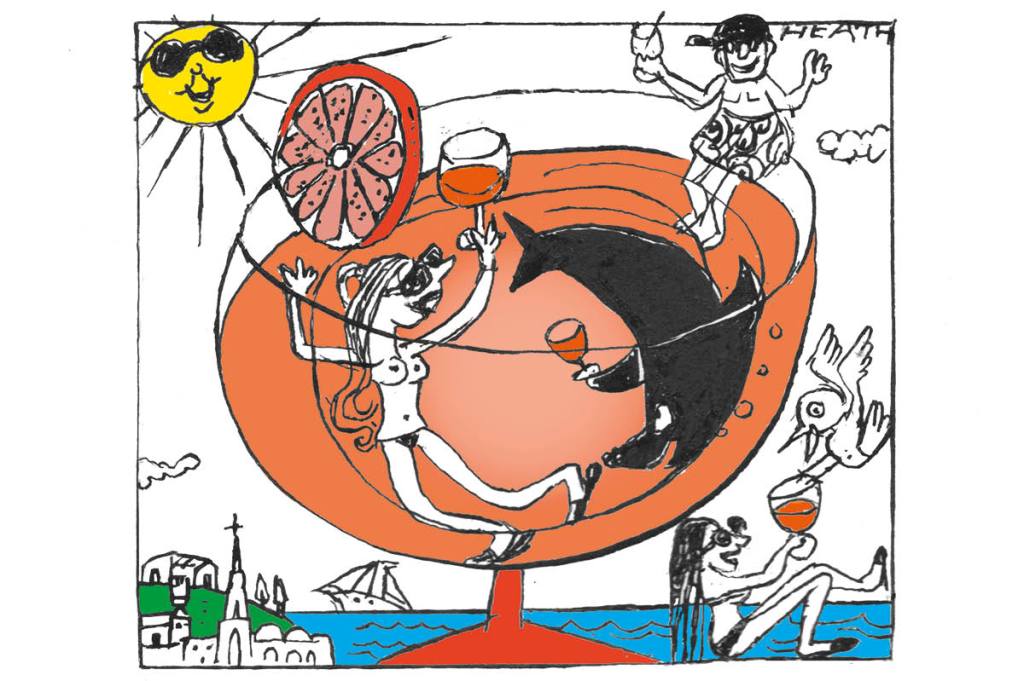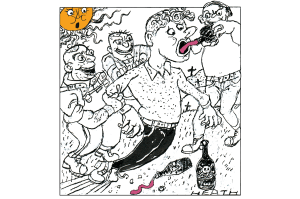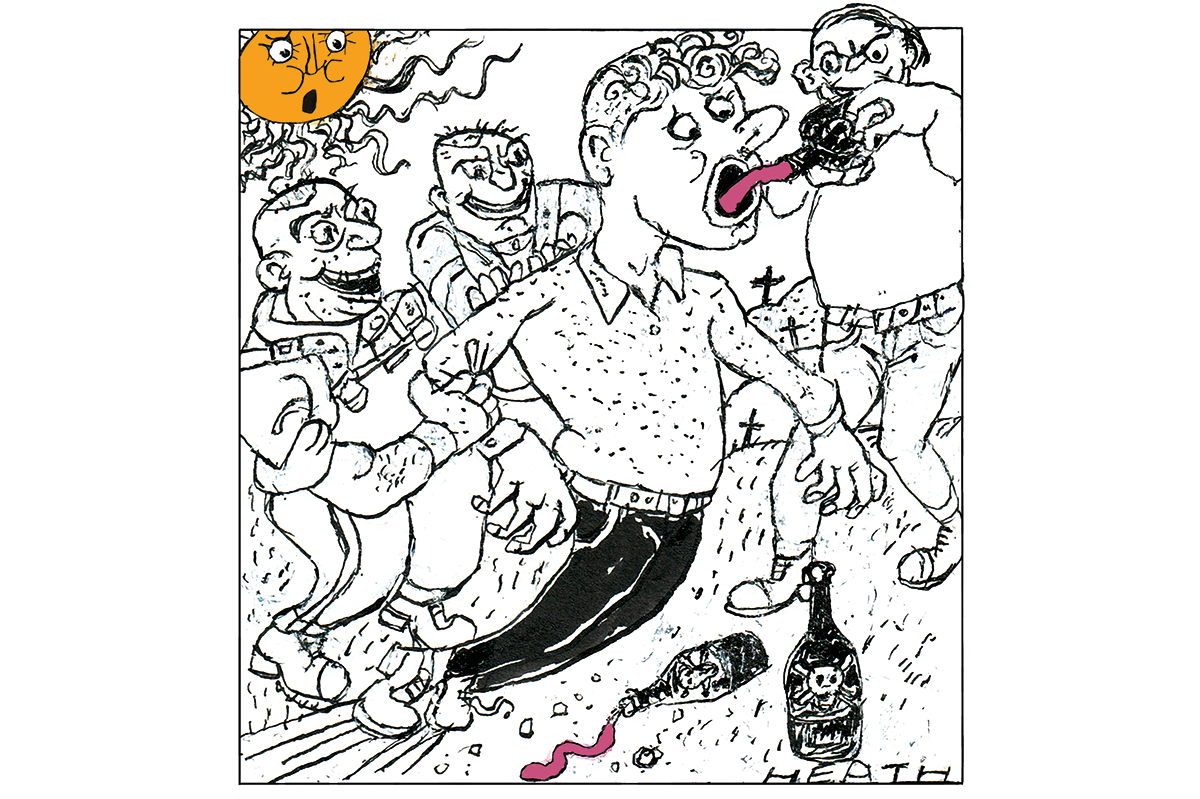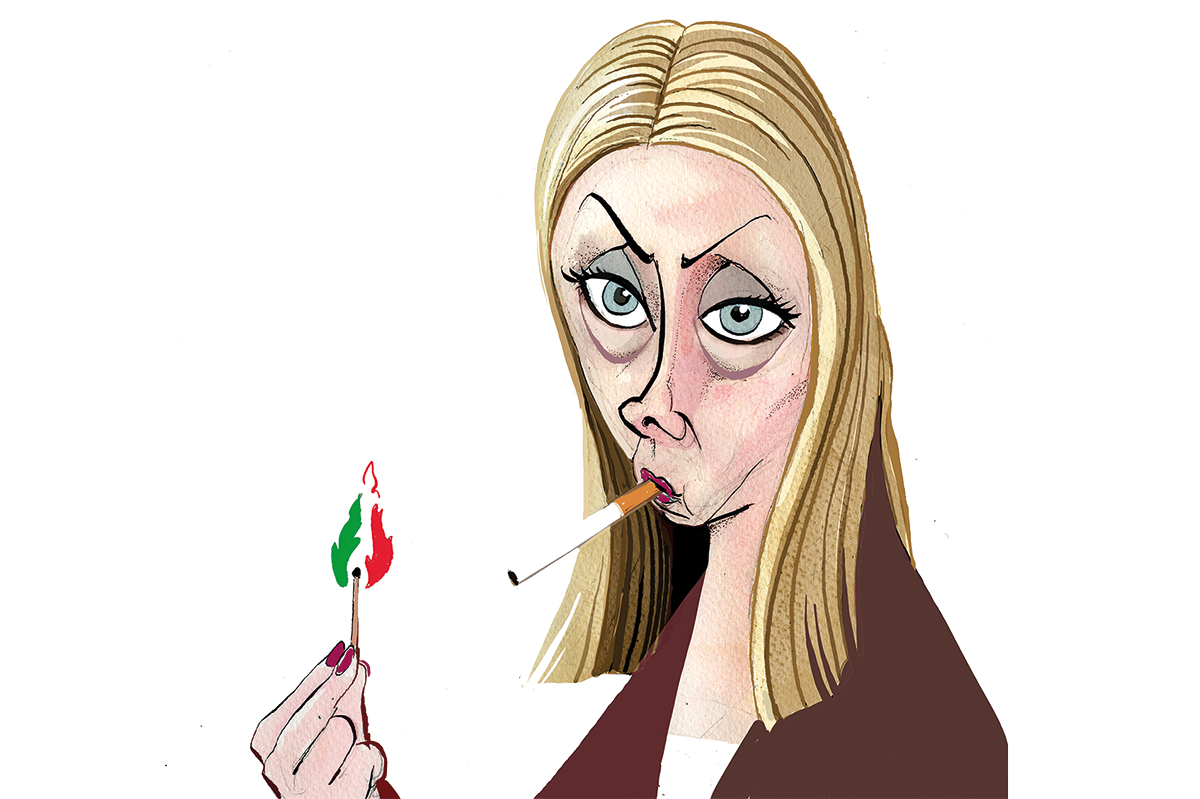I’m in Tuscany, where the piazzas glow orange at dusk, not only from the sunsets but from the profusion of Aperol spritz as well. The bright orange drink has exploded in popularity in the past five years. Everyone’s drinking it: young women, middle-aged couples, groups of wrinkly tanned men, all sucking from straws sticking out of vast wine glasses loaded with ice cubes that give the illusion that there’s more liquid than there is in the famous 3-2-1 formula: three parts prosecco (equating to just one-tenth of a bottle), two parts Aperol and one part soda water, plus the obligatory orange slice.
At the trendiest bar in Lucca I scoured the menu for the two drinks I used most to associate with Italy: Martini Rosso and the Bellini. They weren’t there. Glitzy Aperol spritz, the parakeet of the drinks world, is eliminating the less brash native alternatives.
It’s happening elsewhere, too. Go to a British pub or wine bar on a summer Saturday and you’ll see it everywhere, in branded glasses with “Aperol spritz” in diagonal lettering.
I tend to fall for the drink about once per summer, enticed by its Amalfi-coast associations: “Italian sunset in a glass.” I like the fact that Aperol liqueur was invented in 1919 by the Barbieri brothers in Padua, and that it’s made of poetic plant ingredients: oranges, rhubarb, cinchona and “thirty other secret ingredients” which the Campari Group vowed not to tamper with when they purchased Aperol in 2000.
But after the first three or four thirst-quenching sips, I find it starts to pall, and I start to wonder what those thirty other secret ingredients might be. It tastes a bit chemical (like Campari) but also sickeningly sweet, and I go off its garish color.
I don’t think I’m alone in this. Those glasses of Aperol spritz that cast their glow on Italy’s piazzas are often slow to go down. I notice a great many half-finished ones standing about. They have become a disappointment: weaker, warmer versions of themselves. You see people plowing on with their Aperol spritzes all the way through supper — and it doesn’t go at all well with food. The soda-water and ice-cube padding starts to feel like a real rip-off.
Not everyone is in on the craze. When I ordered mine, the old Italian waiter did a wince of disapproval, and was more approving of my husband’s request for a negroni. I felt like a superficial follower of fashion.
Aperol spritz is a photogenic drink for the Instagram world, its popularity spreading almost entirely because of its visual wow factor. With its low alcohol content (just 11 per cent, less than half of Campari’s), I wonder whether it’s in fact a kind of Campari for children, or for adults who don’t want to be challenged by anything too bitter, interesting, unpredictable or demanding.
I can imagine future generations looking back on Aperol spritz as something that typified the looks-obsessed, style-over-substance Second Roaring Twenties. I wonder what they’ll be drinking then, and what it will say about them.
This article was originally published in The Spectator’s September 2023 World edition.

























